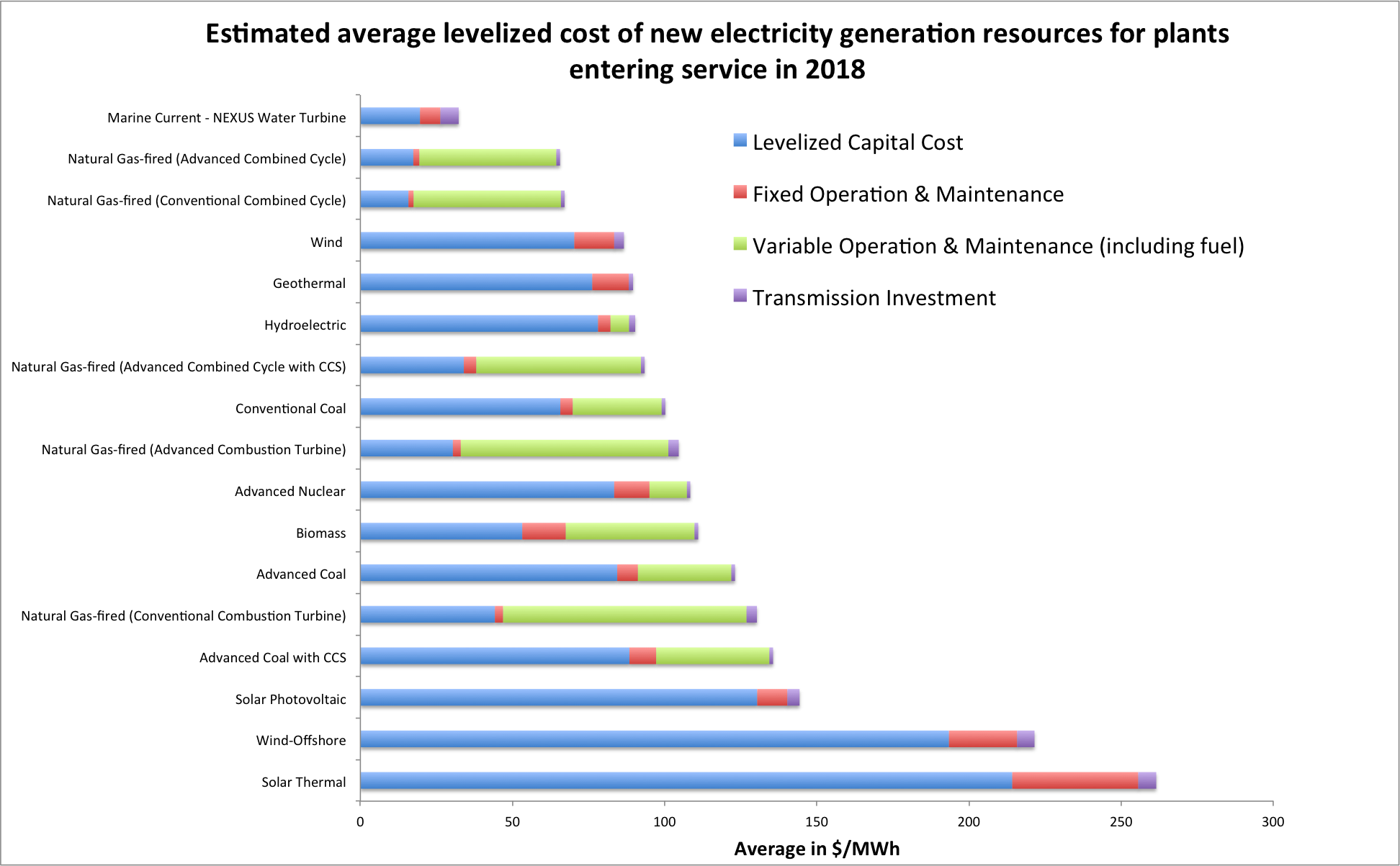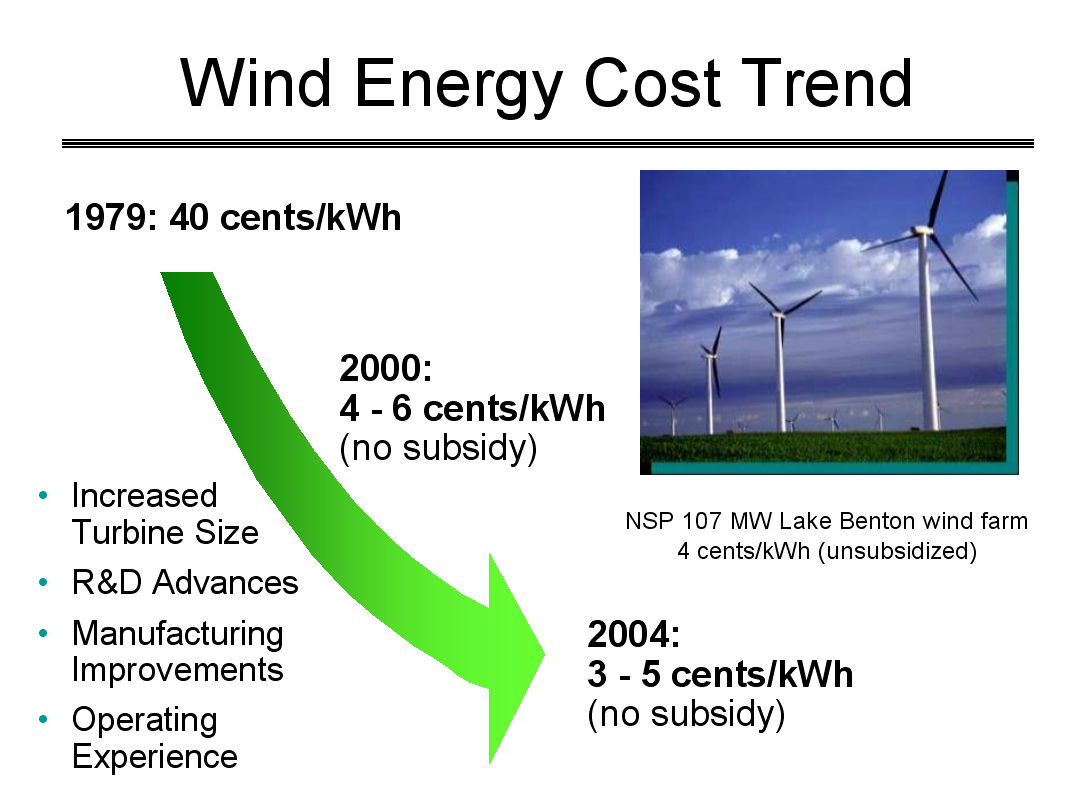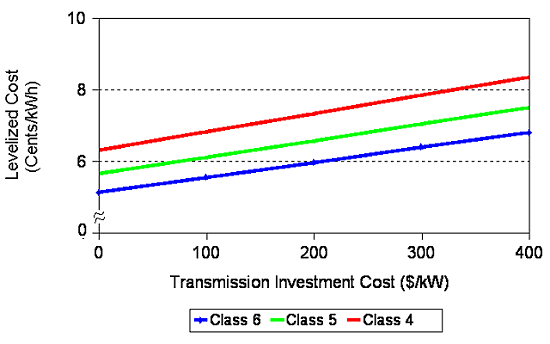Basics of Levelized Costs
The concept of levelized costs is simply the rate at which
you have to meter your product to recover your total costs over
some timeline (usually the lifetime of your production facility).
The benchmark is 5 cents per KWH
for a levelized cost so that a particular technology can become
competitive.
To first order levelized costs can represent
a common framework for comparing technologies, but only when you
know what assumptions are used to define those costs. Different
assumptions produce different models
Levelized costs have four basic components:
Most recent estimate of generation costs as a function of technology. Divide the X-axis by 10 to convert to 10 cents per KWH. Not projected technology comes in at 5 cents per KWH.

As you can see, the relative values of the capital cost, fixed costs, and variable costs varies significantly
with energy source. Most technologies are dominated by Capital Costs (blue bars above). Some technologies can have an apparently low levelized
cost if their production timescale is assumed to be very long (e.g. coal).
Some attributes related to the figure above:
Cheapest Technologies:
- Current flow Turbines: ~5 cents/kwh
- NG fired electricity: ~7.5 cents/kwh
| Expensive Technologies:
- Solar Thermal: ~ 27 cents/kwh
- OFF shore wind: ~23 cents/kwh
|
Variable Cost Dominated:
- NG (all forms)
- Coal to a lesser extent
|
No Variable Costs:
|
Moderate Fixed Costs:
- Wind, Geothermal, Nuclear, Biomass, PV
|
Low Fixed Costs:
- NG (all forms), Hydro, Coal,
|
Renewables Cheap:
- Wind, Geothermal and Hydro at ~10 cents/kwh
| Renewables Not So Cheap:
|
No two credible sources usually give the same exact values for levelized costs for various
technologies because the calculations are all done in a slightly different manner utilizing different assumptions . However,
usually the relative values (e.g. solar vs wind) are
what one should look it.
For reasons to be seen later, COE for wind is projected to have
the lowest levelized costs of any technology.



But wind is somewhat difficult to do because there is an important potential
dependence on transmission line costs:

Overall, levelized costs can be a useful framework for undestanding future costs and
which projects need to be invested in but one has to use more than levelized costs because
one can always optimize assumptions to make favorable cases appear.
|





 land acquisition, manufacturing
of devices, installation of devices. The generic ballpark is to achieve
a capital cost of 1 dollar per 1 watt (e.g. 1 million dollars per megawatt).
Future construction costs are always very hard to predict, however.
land acquisition, manufacturing
of devices, installation of devices. The generic ballpark is to achieve
a capital cost of 1 dollar per 1 watt (e.g. 1 million dollars per megawatt).
Future construction costs are always very hard to predict, however.